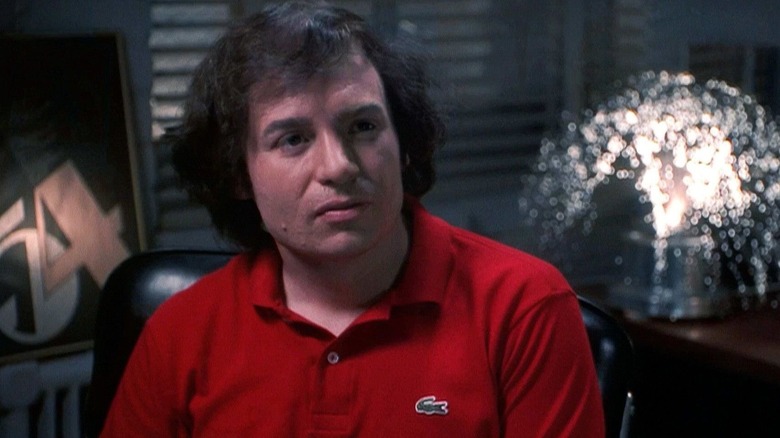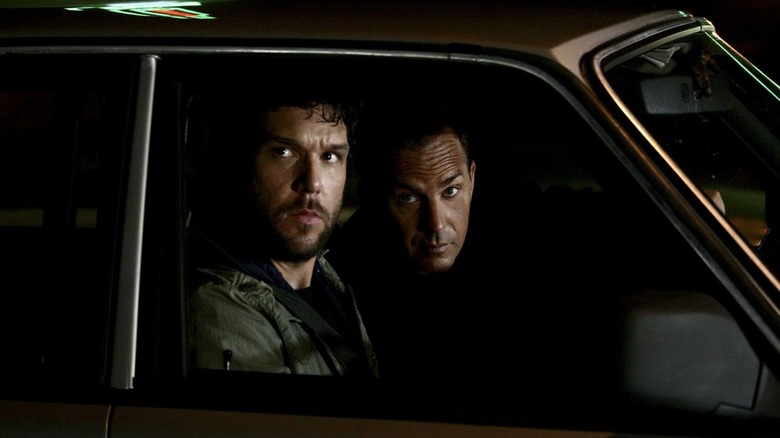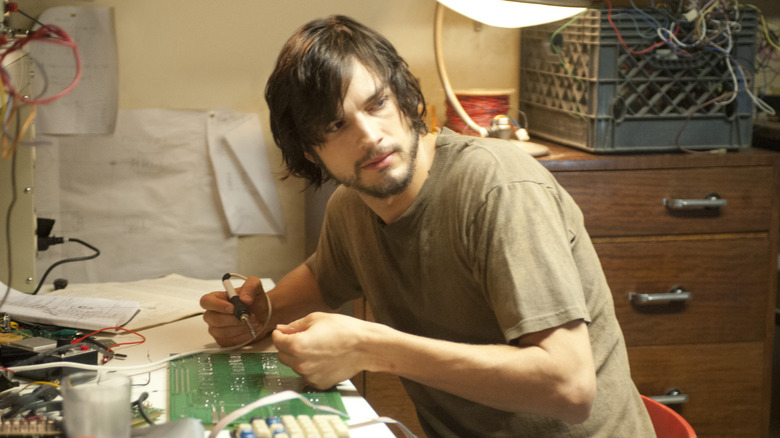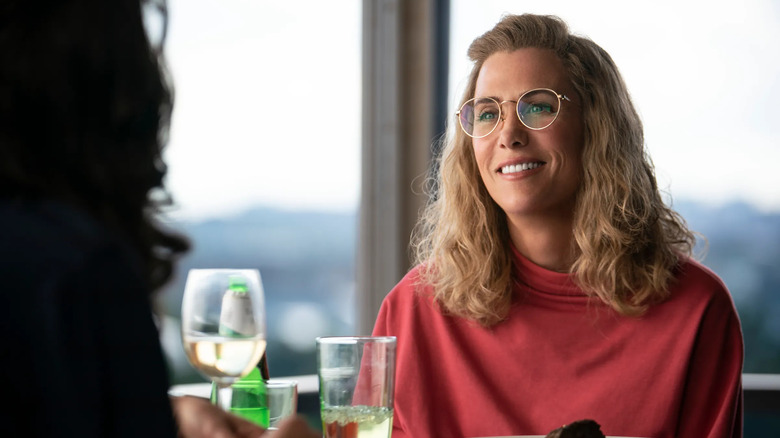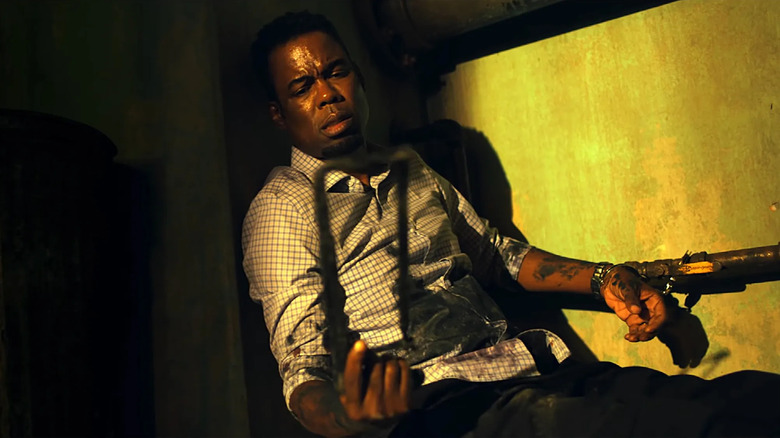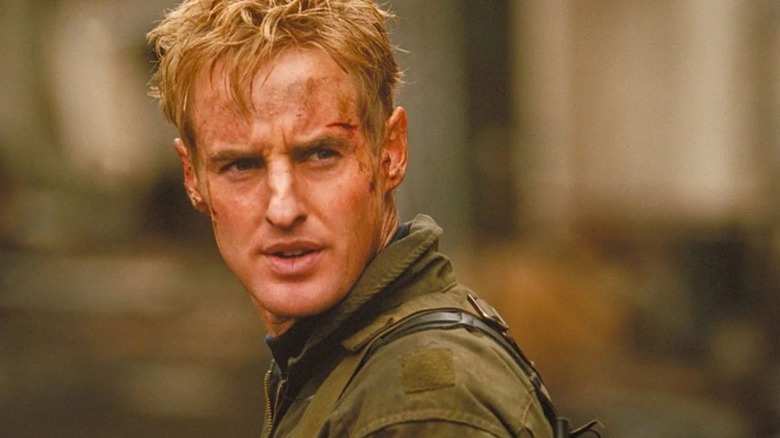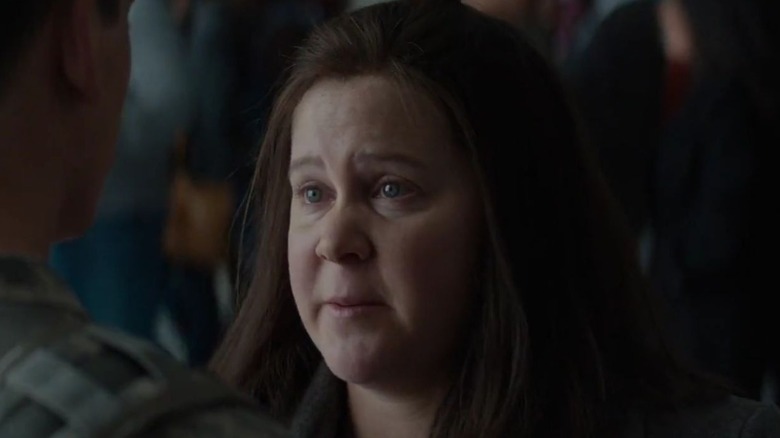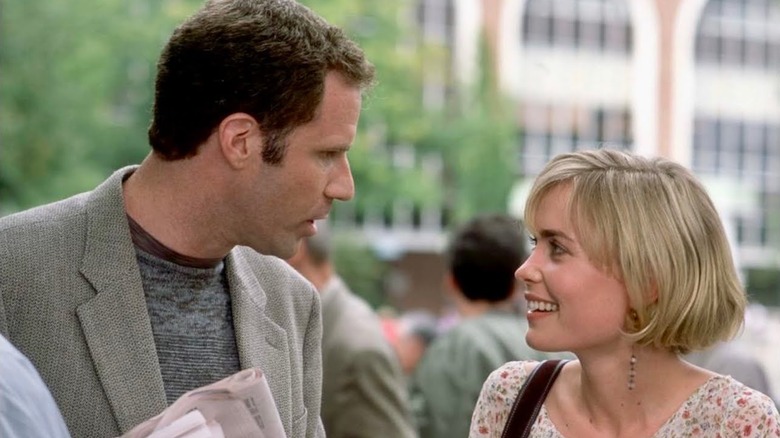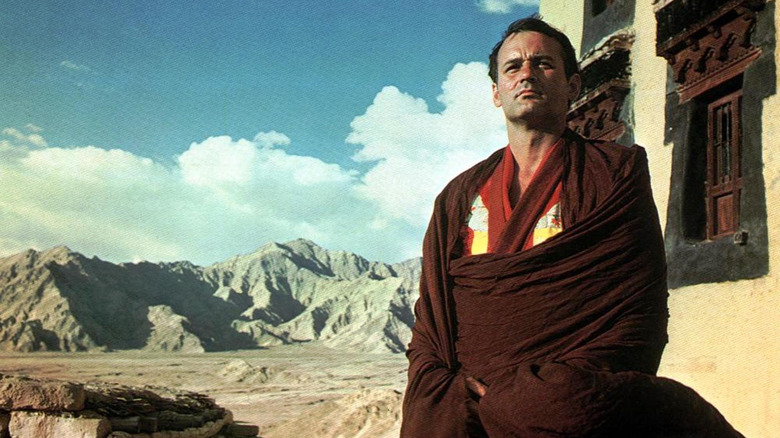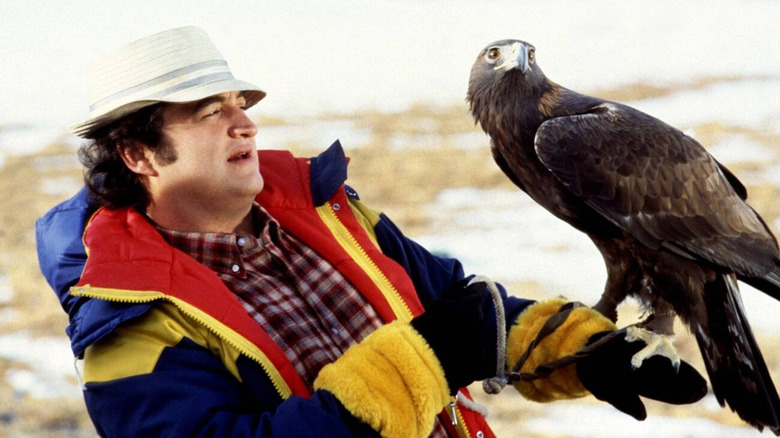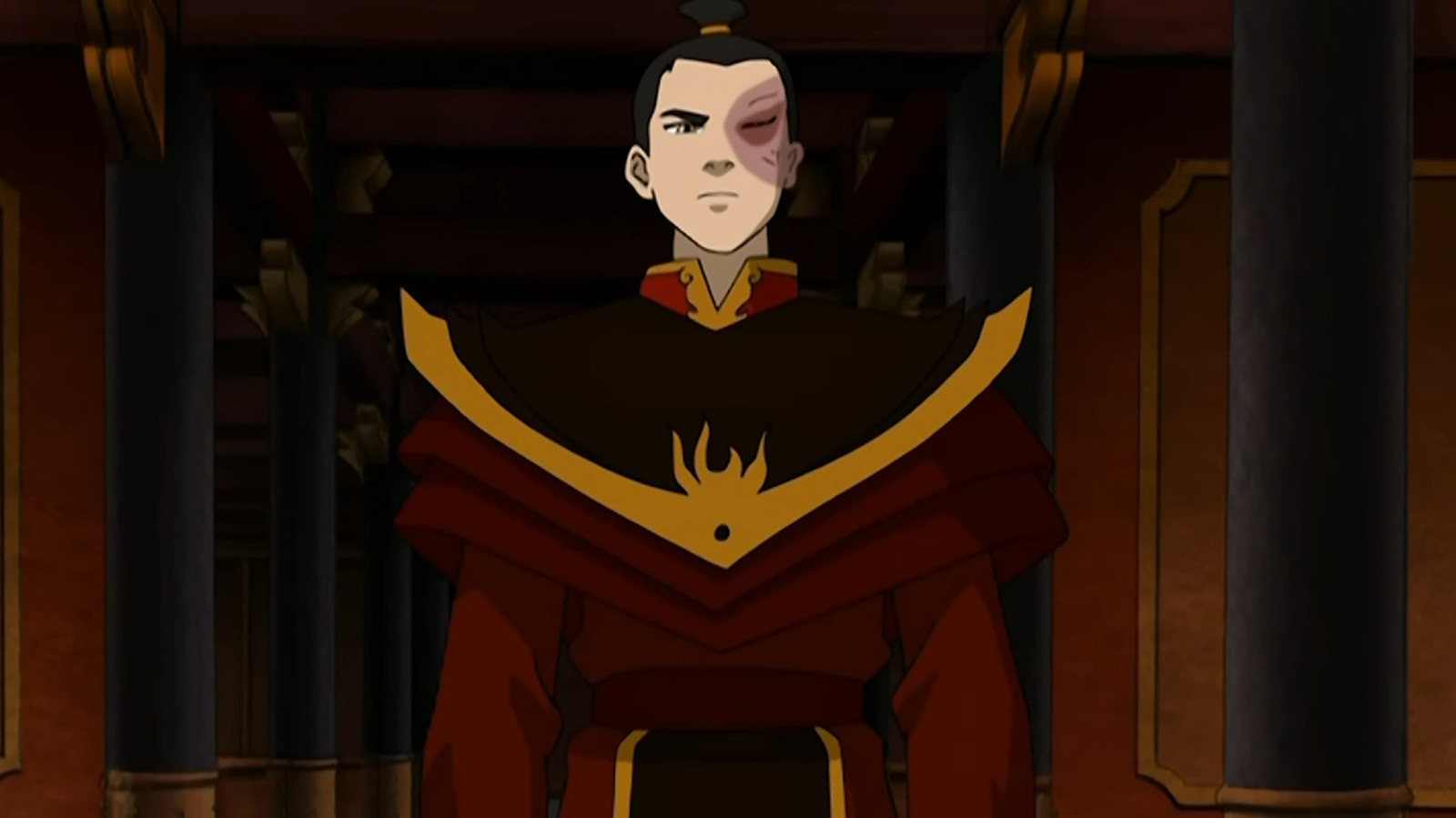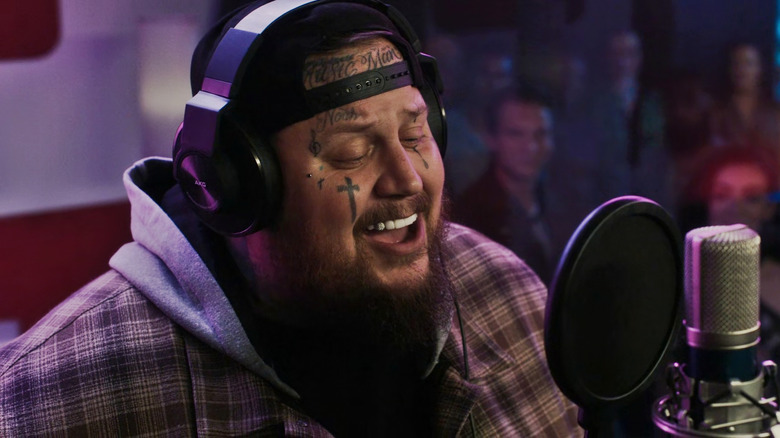
by admin | Jul 30, 2025 | Articles, Hollywood Reporter Articles
The 2025 New York Film Festival has selected Bradley Cooper‘s Is This Thing On? as its closing night film.
The movie, which Cooper directed and co-wrote and stars Will Arnett and Laura Dern, will have its world premiere on Friday, Oct. 10 at Lincoln Center’s Alice Tully Hall on the Upper West Side of Manhattan.
The Searchlight film follows Arnett and Dern’s married couple as they divorce and embark upon midlife self-examinations, as Arnett’s character makes a dramatic career pivot to become a confessional stand-up comedian in New York City’s West Village, where he finds a new purpose and community. Inspired by the true story of British comedian John Bishop, Is This Thing On? features a screenplay co-written by Arnett and Mark Chappell with Cooper. The cast includes Andra Day, Christine Ebersole, Ciarán Hinds, Sean Hayes, Peyton Manning and Amy Sedaris.
Cooper previously directed the acclaimed A Star Is Born and Maestro, the latter of which had its North American premiere as part of the 2023 New York Film Festival.
“We are honored and humbled to premiere our film at the New York Film Festival,” Cooper said in a statement. “Earlier this year we had the wonderful opportunity to shoot this story all throughout the city, so it’s very exciting to debut it on the closing evening of the festival. NYC injects an energy into every aspect of filmmaking that just can’t be replicated. I have attended many premieres at NYFF over the years and to have the support and belief in our film from [NYFF artistic director] Dennis Lim and his team is an enormous thing for us. Thank you! On behalf of Will, Laura and the entire cast and crew—we can’t wait!”
Lim added, “We are thrilled to close the festival with Bradley Cooper’s delightful third feature. Is This Thing On? is a film of many dimensions and surprises: a fond tribute to New York City’s comedy scene, a sensitive study of midlife discontent and a modern-day comedy of remarriage, pitch-perfect in its balance of humor and feeling.”
The NYFF previously announced that Luca Guadagnino’s Julia Roberts starrer After the Hunt, which also features Ayo Edebiri and Andrew Garfield, would be its 2025 opening night film and that Jim Jarmusch’s Father Mother Sister Brother would serve as its centerpiece film.
The 63rd New York Film Festival, presented by Film at Lincoln Center, is set to run from Sept. 26-Oct. 13.
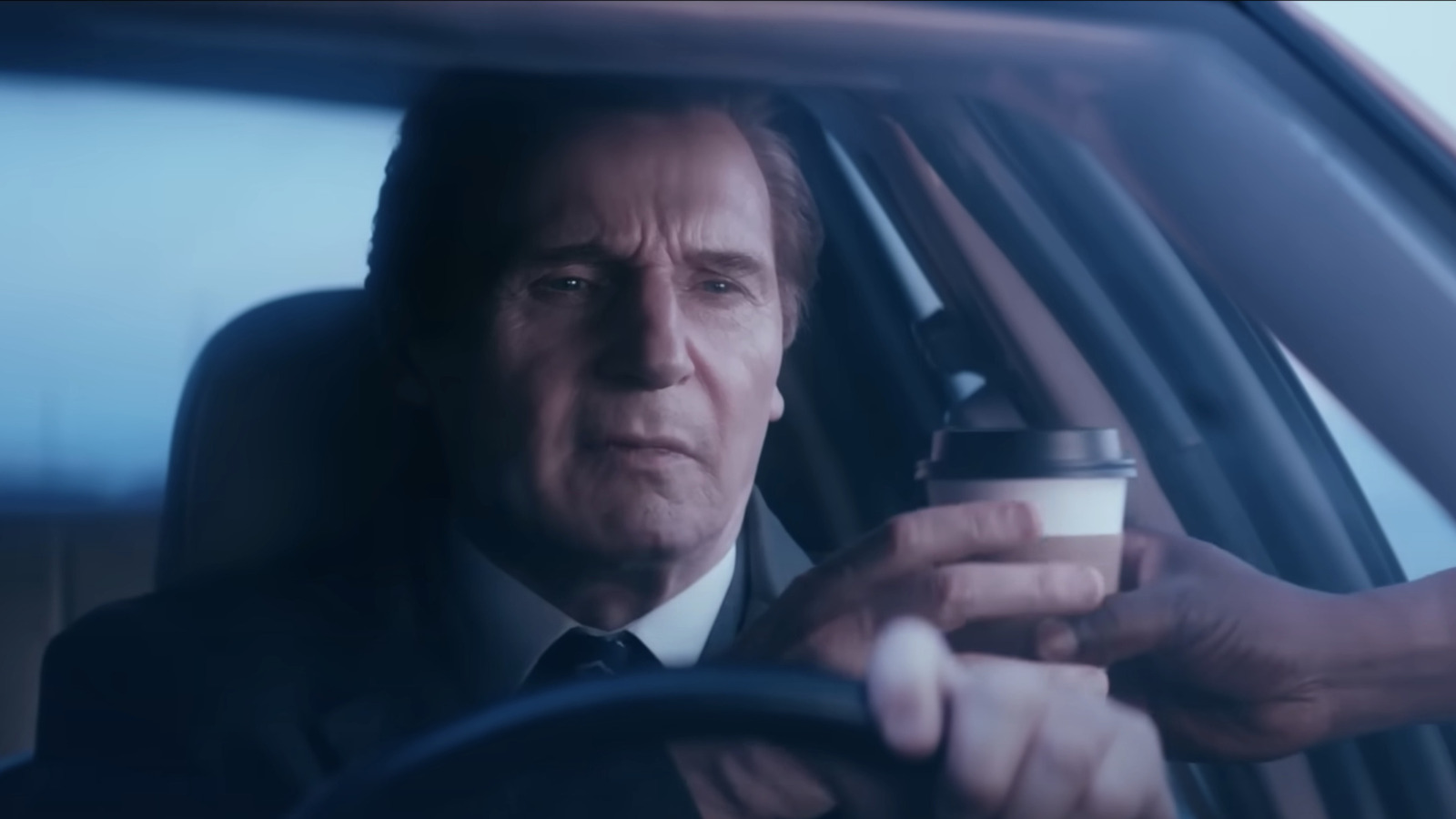
by admin | Jul 30, 2025 | TV & Beyond Articles
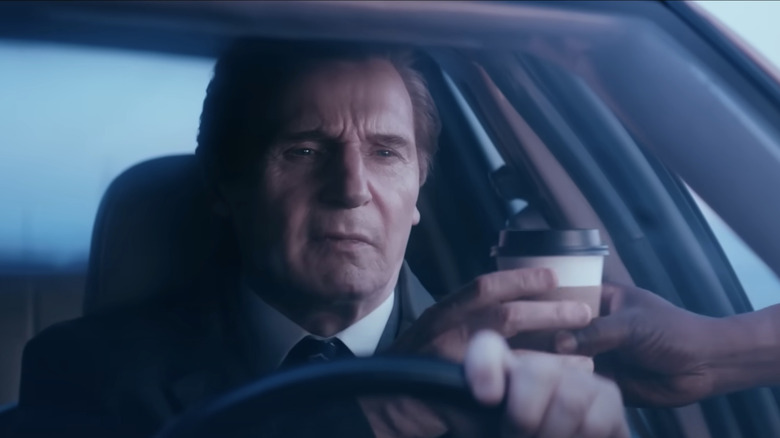
Paramount Pictures
Over the past five years, seeing a straight-up comedy that puts big laughs first and foremost has become a rarity. Gone are the days when filmmakers like Judd Apatow and Adam McKay were given big summer blockbuster release dates for their star-studded comedies, and multiplex general audiences are far worse for it. There’s nothing better than sharing a fit of laughter with a big group of people. While there are blockbusters that come with a fair share of jokes, whether it’s something like “Teenage Mutant Ninja Turtles: Mutant Mayhem” or the video game-infused action of “Free Guy,” rarely do we get to sit down in the theater for a movie that has the explicit goal of making us laugh.
Thankfully, “The Naked Gun” has the power to change that, as long as audiences give it a chance to tickle their funny bone.
Directed by Akiva Shaffer (one-third of the “Saturday Night Live” Digital Short trio known as The Lonely Island and director of cult favorites “Popstar: Never Stop Never Stopping” and “Hot Rod”), this reboot of the beloved spoof franchise that starred Leslie Nielsen comes armed with a worthy successor in the form of “Taken” star Liam Neeson. But more importantly, it delivers a cavalcade of gut-busting jokes and gags that are both stupid and clever, riffing on classic crime thrillers and contemporary action hits while staying true to the goofy, slapstick spirit of the original franchise from “Airplane!” filmmaking trio Jim Abrahams, David Zucker, and Jerry Zucker.
The result is the funniest movie of the year, one that packs so many jokes into its tight 90-minute runtime that you barely have time to catch your breath before cracking up again and again.
Frank Drebin Jr. wants to be just like his father, only completely different and original
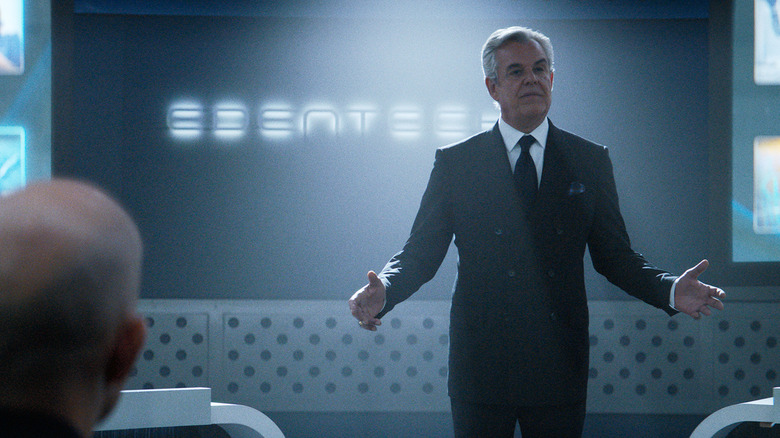
Paramount Pictures
When it comes to spoofs like “The Naked Gun,” the story is merely an excuse for endless yucks and yaks. Even so, writers Doug Mand and Dan Gregor (along with Shaffer) have scripted a story that feels both timeless and modern, fitting right in with today’s culture in a way that will keep it relevant years, even decades from now.
Frank Drebin Jr. is on thin ice after a bank robbery turned violent has gotten Police Squad in some legal hot water, thanks to Drebin’s excessively violent way of handling the perpetrators. Things get even more complicated after a dead body turns up in a “car accident” and the victim’s sister, femme fatale Beth Davenport (a perfectly cast Pamela Anderson continuing her renaissance), comes into the station looking for answers.
When clues and suspicions turn Drebin onto billionaire tech mogul Richard Cane (Danny Huston) and his Edentech corporation, that only creates more intrigue and danger for Police Squad, especially when they learn that he intends to use a device known as the Primordial Law of Toughness (or P.L.O.T. Device) to send a digital sound signal that will take human instincts back to their most animalistic, sparking a new world apocalypse that the worthy (read: rich and male) will survive in a secret bunker, allowing them to inherit the Earth.
The new movie basically takes the plot of the original “Naked Gun” but escalates it to a larger scale by way of a little “Zootopia” and a bit of “2012” in a tech bro package that’s perfect for this era of technology and social politics. You know exactly the kind of people being lampooned here, especially when Cane gets a little too excited and cavalier about celebrating the original version of the Black Eyed Peas hit song “Let’s Get It Started.”
Of course, as Beth tries to turn over rocks to find out what happened to her brother, she can’t help but get close to Frank, and a film noir-esque romance blossoms between them in quite the silly and steamy fashion.
But again, this is just table setting that creates an opportunity for Shaffer, Mand, and Gregor to execute some of the funniest jokes we’ve seen in theaters in recent years.
Taking all the right cues from the original Naked Gun while spoofing the modern movie era
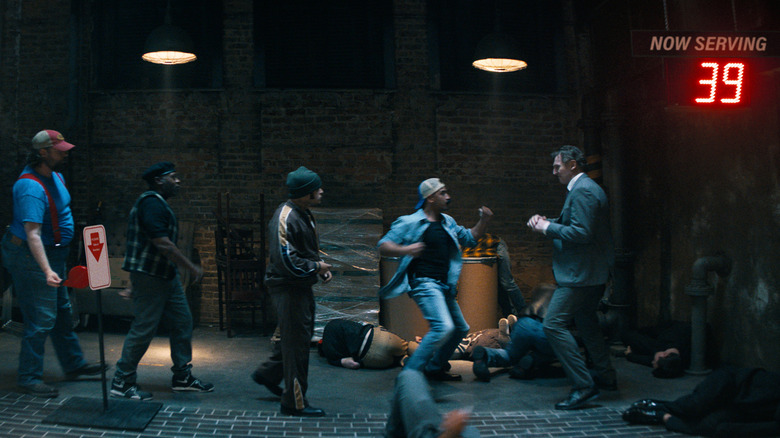
Paramount Pictures
Just like the original “Naked Gun” trilogy, this reboot takes full advantage of the spoof genre by having plenty of slapstick moments, background boffs, and visual jokes. A giant arcade claw comes in to clean up the remnants of a car crash. Drebin is handed a sparkling water in Richard Cane’s private club, and it’s just a sparkler in a glass of water. There’s also the running gag with Drebin and his partner Ed Hocken Jr. (Paul Walter Hauser as the son of George Kennedy’s character) always being handed coffee, even if they already have one in hand, leaving them to casually toss it away without care. Plus, you’ll see little background bits like cops coming out of a freezer labeled “cold case files”
The typical action scene gets infused with a potent dose of absurdity, from Drebin crushing guns with his bare hands or biting the barrel off another. Another sequence finds ripping a henchman’s arms off and using them as weapons. What’s particularly great about a lot of these moments is that they’re not drawing on timely movies where the references will be dated in a few years. The one exception is a riff on a clever beat from “Mission: Impossible – Fallout,” but we won’t spoil it here. You’ll feel flashes and influences of “John Wick” and “Law & Order” too, but never to the point that it feels like a direct spoof of any of them.
PG-13 movies are rarely this funny, and it’s just naughty enough
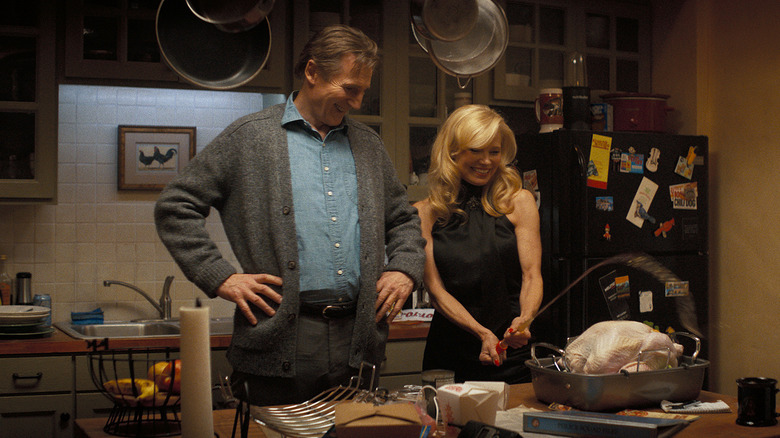
Paramount Pictures
It’s not all innocent tomfoolery though, as there are some jokes intended for a slightly more adult audience. It never veers into overly raunchy territory, and the fact that the movie is this funny while still maintaining a PG-13 rating is kind of a miracle these days. In fact, this might be one of the funniest PG-13 movies ever made. But there are a few more risqué notes when it comes to the romance that arises between Frank and Beth, especially when lead henchman Sig Gustafson (Kevin Durand of “Kingdom of the Planet of the Apes”) witnesses one of their dates with a sight gag that recalls another great parody comedy, “Austin Powers: The Spy Who Shagged Me,” with just enough escalation to make it feel fresh. Another standout line alludes to a nasty but practical use for an old Bon Jovi t-shirt.
The slightly more mature content extends to the sultry but silly parlance between Frank and Beth, and it leads to a show-stopping romance sequence that pulls the rug out from the audience by shifting into an entirely different genre in the funniest way possible. It’s this approach to “The Naked Gun” that makes the franchise revival work so well. Shaffer, Gregor, and Mand knew they were never going to outdo the original franchise, so they gave it a new spin without losing what made the original movie great, a lesson that the minds behind “Happy Gilmore 2” should have taken the time to learn.
Consistently and exhaustingly funny
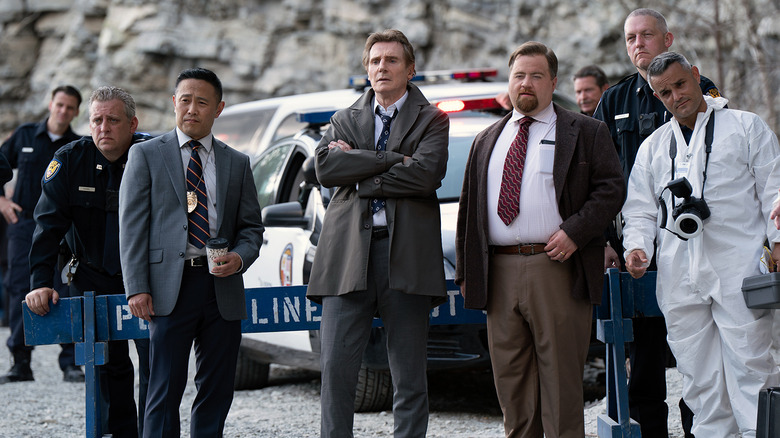
Paramount Pictures
But the secret sauce of the original franchise is still what makes “The Naked Gun” reboot work so well: Everyone is playing everything totally straight. The movie is funny, but no one is trying to ham it up for laughs here.
Liam Neeson is still deadly serious and also seriously funny. Though not quite reaching the greatness of the incomparable Leslie Nielsen, if only because of a handful of clumsy line deliveries and minor accent flubs, he still holds his own as the leading man in a spoof. Even Pamela Anderson’s impromptu scat singing in Richard Cane’s private club is earnest and energetic, and you can really feel her giving it her all to create a distraction. Plus, she’s got that ever so slightly melodramatic femme fatale routine down to a science. Meanwhile, like Robert Goulet and Ricardo Montalbán before him, Danny Huston is the perfect actor to play a rich bad guy without giving a wink and nod to the audience. But he still gets his own share of great laughs too, especially in the film’s climactic fight in the third act.
In fact, the entire cast is one of the best elements of “The Naked Gun” because it shows serious restraint in how to execute the comedy without overdoing it. If you’re expecting a load of cameos from familiar faces who have worked with The Lonely Island before, lower your expectations there. However, that’s what makes the tongue-in-cheek tone of “The Naked Gun” work so well. They’re not using people who you expect to be funny, other than a certain cameo that’s become a franchise tradition at this point.
It also helps that the movie has the genuine visual style and tone of all the movies it’s trying to parody. That extends from “MacGruber” director of photography Brandon Trost, who knows how to perfectly capture the style of 1980s and 1990s action movies, to score composer Lorne Balfe, who also wrote the music for “Mission: Impossible – Fallout.” There are even moments where you’ll recognize subtle orchestral cues that would easily be right at home in the Tom Cruise franchise. Yes, the entire crew is taking the movie just as seriously as a real action movie.
“The Naked Gun” is one of the most consistently and even exhaustingly funny movies in a long time, the kind of outrageous, outlandish comedy that multiplexes have been missing for years. It’s truly a revelation to have a movie where the laughs come so fast and furious. Sure, not every punchline or bit hits the mark, but you never really have time to linger on it, because the next quip, pun, farce, or nonsense will be arriving in just a few seconds. You’ll laugh so much it hurts. Oh sure, maybe not as much as landing on a bicycle with the seat missing, but it hurts!
/Film Rating: 9 out of 10

by admin | Jul 30, 2025 | Articles, Hollywood Reporter Articles
Pete Davidson is opening up about the reality of working on lower-budget indie film sets.
The Saturday Night Live alum made an appearance on the latest installment of Hot Ones, where he was asked by host Sean Evans about his experience working alongside the legendary Bill Murray.
That’s when Davidson recalled his indie crime comedy Riff Raff, which also starred Murray. Despite getting to work with the “icon of comedy and film” on the project, he also remembered how “tough” indie films can be to make.
“The movie we did — it’s a tough one because it’s an indie, so there’s no budget and there’s not anything glamorous about it,” Davidson explained. “No one makes money, no one’s comfortable, it’s strictly like for the art.”
However, the Bupkis actor added that Murray offered him a lot of guidance to help make the indie set experience a bit easier.
“He was kind of captain and kind of like calming me down, ’cause we were shooting in November in [New] Jersey,” Davidson said. “It was like 10 degrees out and I was freaking out, and he goes, ‘We’re doing good work.’ He’s like, ‘You’re going to be very happy when you see this later.’ He goes, ‘You know, this is the hard part.’ And he just kind of Mr. Miyagi-ed me into behaving better on set. So, he’s a real pro and he’s great in everything he’s in. I had a blast.”
Riff Raff, which also starred Jennifer Coolidge, Ed Harris, Lewis Pullman, Gabrielle Union and Michael Angelo Corvino, follows a former criminal whose ordinary life is turned upside down when his old family shows up for a long-awaited reunion.
Earlier this year, Coolidge recounted her experience working with Davidson on the crime comedy. She described the actor-comedian as “one of the most unpredictable people I’ve ever met,” adding, “You can’t really get a take on him because he’s like this chameleon.”
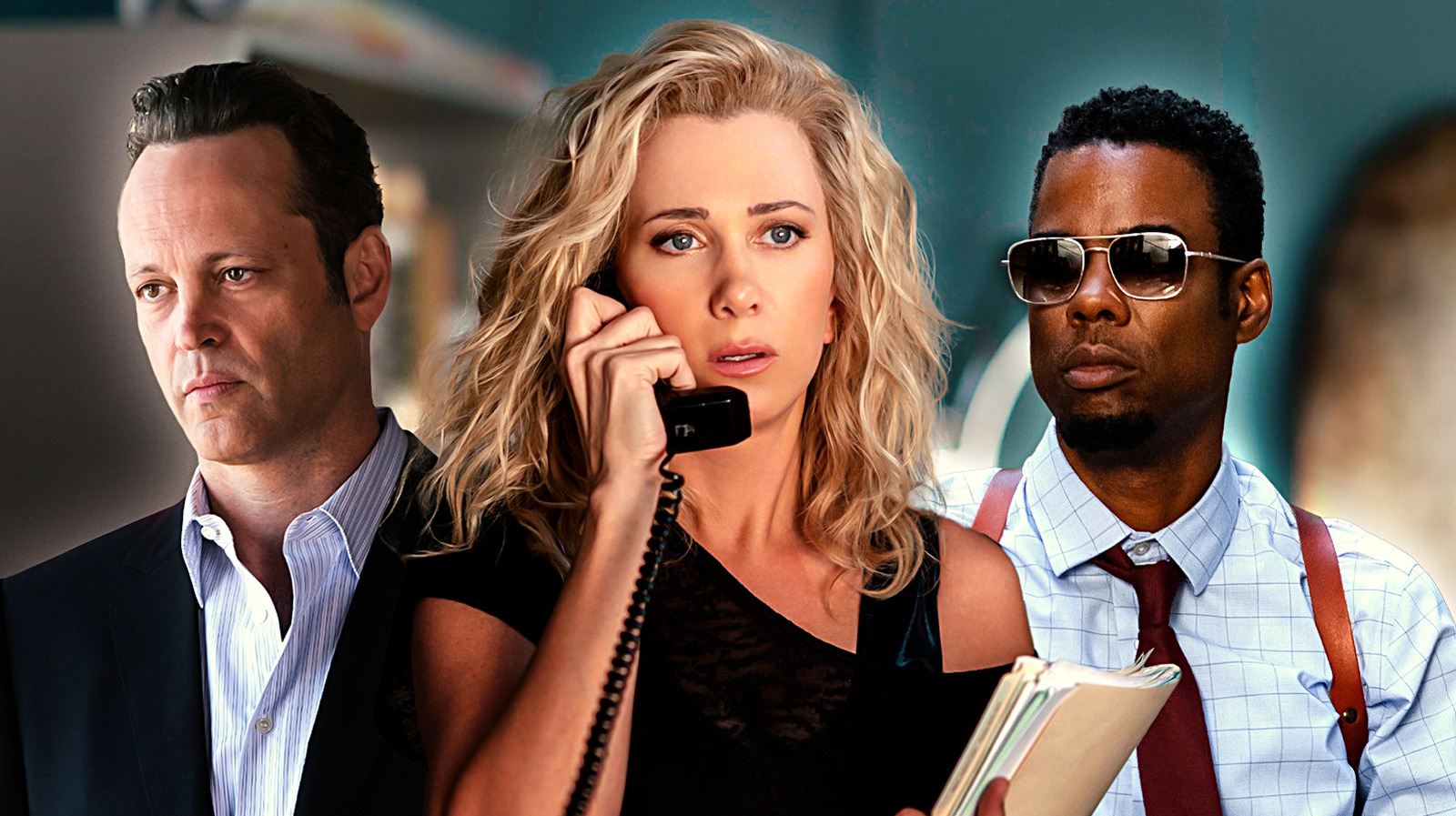
by admin | Jul 30, 2025 | TV & Beyond Articles
above and beyond behind the scenes to win a well-deserved Oscar for “Good Will Hunting.” While audiences always recognized him for his energetic stand-up routines and comedic performances in blockbusters like “Mrs. Doubtfire” and Disney’s animated “Aladdin,” he still managed to carve out a solid niche as a bankable dramatic star.
There are other examples of legendary comedians balancing their screwball antics with more dramatic fare — think Jim Carrey in “The Truman Show” or Eddie Murphy in “Dreamgirls.” Unfortunately, there are also plenty of times when a comedic actor or actress stumbled on their way to dramatic heights.
All jokes aside, here are 12 comedic actors who tried their hand at drama … and came up short.











